お正月や祝いの席で耳にする、優雅で華やかな「お琴」の音色。その清らかな響きは、日本の伝統的な美しさを感じさせてくれます。十三本の弦が奏でる繊細なメロディは、多くの人の心に安らぎと感動を与えてきました。しかし、この「お琴」、実は二つの異なる楽器の総称であり、その歴史は奈良時代の宮中まで遡る壮大な物語を持っていることをご存知でしょうか?
- 「琴」と「箏」は別物?:知られざる名前の秘密
- 八橋検校の革命:宮中楽器から庶民の芸術へ
- 生田流と山田流:江戸が生んだ二大流派の個性
すべては大陸から始まった:雅楽の楽器「楽箏」
今日、私たちが一般的に「お琴」と呼んでいる楽器の正式名称は「箏(そう)」と言います。そのルーツは、奈良時代に唐(とう・現在の中国)から伝来した楽器です。当初は、宮中儀式などで演奏される雅楽(ががく)の合奏で使われる「楽箏(がくそう)」として、ごく限られた貴族や僧侶だけが触れることのできる高貴な楽器でした。
ここで一つ、重要なポイントがあります。実は「おこと」には、もう一つ「琴(きん)」と呼ばれる楽器が存在します。この二つは、見た目も構造も全く異なります。
- 箏(そう): 弦の下に**「柱(じ)」**という可動式の支柱を立て、その位置を動かして音の高さを調整します。指にはめた爪(つめ)で弦を弾きます。
- 琴(きん): 柱がなく、弦を指で押さえる場所を変えることで音程を決めます。
日本では、より華やかなメロディ演奏に適した「箏」が主流となり、いつしか両方の楽器を総称して「おこと」と呼ぶようになったのです。
芸術への昇華:八橋検校と「箏曲」の誕生
長い間、雅楽の合奏楽器の一つに過ぎなかった箏を、独奏も可能な芸術楽器へと昇華させた大改革者が現れます。17世紀、江戸時代初期に活躍した盲目の音楽家、**八橋検校(やつはしけんぎょう)**です。
彼は、それまであった箏の音楽を基礎に、より芸術性の高い独奏曲の形式「段物(だんもの)」を確立しました。その代表曲である「六段の調」は、今日でも多くの人が学ぶ箏曲の基本中の基本です。また、現在の箏の調弦の基本である「平調子(ひらぢょうし)」を定めたのも八橋検校でした。彼の数々の功績により、箏は宮中や寺社のもとを離れ、武家や裕福な町人の間にも広まっていきました。まさに「近代箏曲の父」と呼ぶにふさわしい存在です。
江戸の粋が生んだ二大流派:生田流と山田流
八橋検校によって芸術への扉が開かれた箏曲は、江戸時代中期から後期にかけて、さらに大きく花開きます。その原動力となったのが、現在も続く二大流派の誕生でした。
一つは、上方(現在の大阪・京都)を中心に広まった**「生田流(いくたりゅう)」**。創始者は生田検校です。技巧的でスリリングな曲調が特徴で、三味線と合奏する「地歌箏曲」の発展に大きく貢献しました。
もう一つは、江戸(現在の東京)で生まれた**「山田流(やまだりゅう)」**。創始者は山田検校です。こちらは歌(唄)を非常に大切にし、浄瑠璃などの語り物を取り入れた、叙情的で華やかな音楽性を特徴とします。
この二つの流派は、使う爪の形も異なり、それぞれが切磋琢磨することで、箏曲の世界をより豊かで多様なものへと発展させていったのです。
伝統と革新のハーモニー:現代に生きるお琴
明治時代に入り、西洋音楽が日本に流入すると、箏曲も新たな変革の時代を迎えます。その中心人物が、**宮城道雄(みやぎみちお)**です。彼は伝統的な箏曲に西洋音楽の和声や作曲技法を積極的に取り入れ、今や誰もが知る名曲「春の海」を作曲しました。また、より低い音域を求めて「十七絃箏」を開発するなど、その革新的な活動は、現代の箏曲の礎を築きました。
そして現代、お琴の世界はさらに広がりを見せています。古典曲が大切に受け継がれる一方で、J-POPや映画音楽のカバー、ピアノやヴァイオリンといった洋楽器とのセッションなど、ジャンルを超えた自由な演奏が楽しまれています。その優雅な音色は、時代を超え、形を変えながら、今も私たちの心に響き続けているのです。
解説ポイント①:「琴」と「箏」は別物?:知られざる名前の秘密
「琴(きん)」と「箏(そう)」の違いは、その文化的背景にもあります。「琴」は、中国古代の賢人たちが精神修養のために嗜んだとされる、非常に哲学的な楽器です。柱がないため、左指で弦を押さえて音程を作り出す繊細な技術が求められ、その音色は内省的です。一方、「箏」は柱で音階をあらかじめ設定するため、右手で華やかなメロディや力強い和音を奏でることに適しています。日本ではこの明快で表現力豊かな「箏」が人々の心をつかみ、広く普及しました。そして、元々あった「こと」という大和言葉(弦楽器全般を指したとも言われる)が、主流となった「箏」を指す言葉として定着したと考えられています。
解説ポイント②:八橋検校の革命:宮中楽器から庶民の芸術へ
八橋検校の功績は、単に名曲を作っただけではありません。彼は、箏の音楽に「形式」を与えたのです。彼が確立した「段物」は、いくつかの段(楽章)から構成される器楽曲で、後の箏曲におけるソナタ形式のような基本構造となりました。また、歌詞のある「組歌(くみうた)」の形式も整え、箏が「歌の伴奏」としても優れた楽器であることを証明しました。それまでの箏が、即興的要素の強いものであったのに対し、八橋検校は楽譜として残せる「作品」を創り上げたのです。これにより、誰もが同じ曲を学び、教えることが可能になり、箏曲が全国に広まるための土台が築かれました。
解説ポイント③:生田流と山田流:江戸が生んだ二大流派の個性
生田流と山田流の音楽性の違いは、使用する「爪」の形に象徴されています。
- 生田流が使うのは角爪(かくづめ)。爪の形が四角く、先端が鋭角に近いため、弦にシャープに触れることができます。これにより、速いパッセージや歯切れの良いリズム、技巧的な表現が可能になり、三味線と丁々発止のアンサンブルを繰り広げる地歌箏曲に適しています。
- 山田流が使うのは丸爪(まるづめ)。爪の先端が丸みを帯びており、弦に触れる面積が広いため、豊かで柔らかい音色が出せます。この音色は人の声とよく馴染み、歌の旋律を美しく彩るのに最適です。江戸で流行した歌い語る形式の音楽から発展した流派の特性が、爪の形にも表れています。 物理的な形のわずかな違いが、流派全体の芸術的な方向性を決定づけている点は、非常に興味深いと言えるでしょう。
参考文献
【English Article】
【O-Koto】A Tale of Elegant Sounds: The History of the Koto from the Nara Court to the Modern Day
The elegant and brilliant sound of the “o-koto,” often heard during New Year’s celebrations and festive occasions, evokes a sense of traditional Japanese beauty. The delicate melodies played on its thirteen strings have brought peace and emotion to many hearts. However, did you know that the term “o-koto” is actually a general name for two different instruments, and that its history is a grand saga stretching back to the Nara period court?
- “Kin” and “Sō” Are Different? The Secret Behind the Name
- The Revolution of Yatsuhashi Kengyō: From Court Instrument to Folk Art
- Ikuta-ryū and Yamada-ryū: The Two Great Schools Born in the Edo Period
It All Began on the Continent: The “Gakuso” of Gagaku Court Music
The official name for the instrument we generally call the “o-koto” today is the “sō.” Its roots trace back to an instrument introduced from Tang Dynasty China during the Nara period (710-794). Initially, it was a noble instrument known as the “gakusō,” used in the ensemble music of “gagaku” (court music) performed at ceremonies, accessible only to a limited class of aristocrats and priests.
Here lies a crucial point: there is another instrument also referred to as an “o-koto,” called the “kin.” These two are entirely different in appearance and structure.
- Sō: Has movable bridges called “ji” under the strings. The pitch is adjusted by moving these bridges. The player plucks the strings with picks (“tsume”) worn on the fingers.
- Kin: Has no bridges. The player changes the pitch by pressing the strings at different points with their fingers.
In Japan, the “sō,” which was better suited for playing brilliant melodies, became mainstream. Over time, the term “o-koto” came to be used as a general term for both instruments.
Sublimation into Art: Yatsuhashi Kengyō and the Birth of “Sōkyoku”
A great reformer emerged who elevated the sō from being just one instrument in a gagaku ensemble to an artistic instrument capable of solo performance. This was Yatsuhashi Kengyō, a blind musician active in the early Edo period during the 17th century.
Building upon the existing sō music, he established the “danmono” form for solo instrumental pieces of high artistic quality. His most famous work, “Rokudan no Shirabe” (Music of Six Steps), remains a fundamental piece studied by nearly all sō players today. Yatsuhashi Kengyō also established the “hira-jōshi” tuning, which is still the basic tuning for the sō. Through his numerous achievements, the sō left the exclusive confines of the court and temples and spread among the samurai and wealthy merchant classes. He is truly deserving of the title “Father of Modern Sōkyoku” (koto music).
The Two Great Schools Born from Edo’s Spirit: Ikuta-ryū and Yamada-ryū
Sōkyoku, whose artistic doors were opened by Yatsuhashi Kengyō, blossomed even further from the mid to late Edo period. The driving force behind this was the birth of two major schools that continue to this day.
One is the “Ikuta-ryū” (Ikuta school), which spread mainly in the Kamigata region (present-day Osaka and Kyoto). Founded by Ikuta Kengyō, it is characterized by technical and thrilling compositions and greatly contributed to the development of “jiuta sōkyoku,” ensembles with the shamisen.
The other is the “Yamada-ryū” (Yamada school), born in Edo (present-day Tokyo). Founded by Yamada Kengyō, this school places great importance on the song (uta) and is characterized by a lyrical and brilliant musicality that incorporates narrative styles like jōruri.
These two schools even use different shaped picks, and by competing and influencing each other, they developed the world of sōkyoku into something richer and more diverse.
A Harmony of Tradition and Innovation: The O-Koto in the Modern Era
When Western music flowed into Japan during the Meiji era (1868-1912), sōkyoku also entered a new era of transformation. The central figure in this was Miyagi Michio. He actively incorporated Western harmony and compositional techniques into traditional sōkyoku, composing the world-renowned masterpiece “Haru no Umi” (The Sea in Spring). He also developed the “jūshichigen-sō” (17-string koto) in pursuit of a lower register. His innovative activities laid the foundation for modern sōkyoku.
Today, the world of the o-koto continues to expand. While classical pieces are carefully passed down, the instrument is enjoyed in various forms, including covers of J-pop and movie soundtracks, and sessions with Western instruments like the piano and violin. Its elegant sound, transcending time and changing form, continues to resonate in our hearts today.
Analysis Point ①: “Kin” and “Sō” Are Different? The Secret Behind the Name
The difference between the “kin” and the “sō” also lies in their cultural backgrounds. The “kin” is considered a highly philosophical instrument, enjoyed by ancient Chinese sages for spiritual cultivation. As it has no bridges, it requires delicate technique with the left hand to create pitches, and its sound is introspective. The “sō,” on the other hand, is suited for playing brilliant melodies and powerful chords with the right hand, as its scale is preset by the bridges. In Japan, the clear and expressive “sō” captured people’s hearts and became widely popular. It is believed that the native Japanese word “koto” (which may have referred to all string instruments) became established as the term for the now-mainstream “sō.”
Analysis Point ②: The Revolution of Yatsuhashi Kengyō: From Court Instrument to Folk Art
Yatsuhashi Kengyō’s achievement was more than just composing famous pieces; he gave “form” to sō music. The “danmono” form he established is an instrumental piece composed of several sections, or “dan,” which became a fundamental structure for later sōkyoku, much like a sonata form. He also arranged the “kumiuta” form for vocal pieces, proving that the sō was an excellent instrument for accompanying songs. Whereas previous sō music had strong improvisational elements, Yatsuhashi Kengyō created “works” that could be preserved in scores. This made it possible for anyone to learn and teach the same pieces, laying the groundwork for sōkyoku to spread throughout the country.
Analysis Point ③: Ikuta-ryū and Yamada-ryū: The Two Great Schools Born in the Edo Period
The different musicalities of the Ikuta and Yamada schools are symbolized by the shape of the picks (“tsume”) they use.
- Ikuta-ryū uses “kaku-zume” (square picks). The pick’s shape is square with a sharp tip, allowing for a sharp touch on the strings. This enables fast passages, crisp rhythms, and technical expression, making it well-suited for the dynamic interplay with the shamisen in jiuta sōkyoku.
- Yamada-ryū uses “maru-zume” (round picks). The tip of the pick is rounded, providing a wider contact area with the string, which produces a rich and soft tone. This sound blends well with the human voice and is ideal for beautifully rendering melodies as song accompaniment. The characteristics of this school, which developed from the narrative-focused music popular in Edo, are reflected even in the shape of its picks. It is fascinating how a slight physical difference in shape dictates the entire artistic direction of a school.


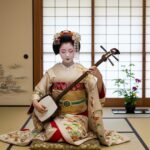
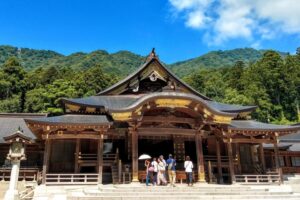
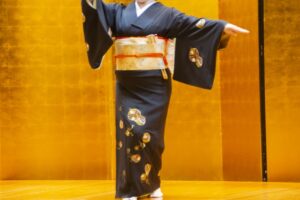

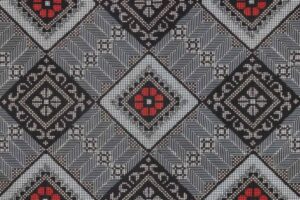
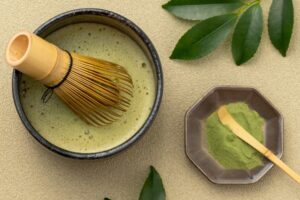

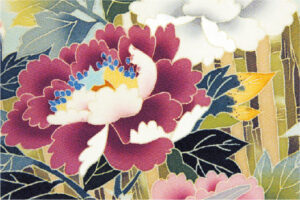
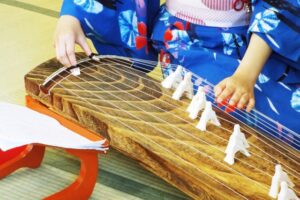
コメントを残す